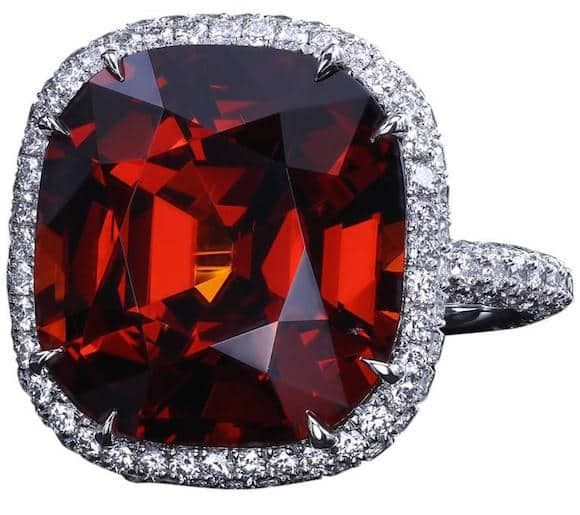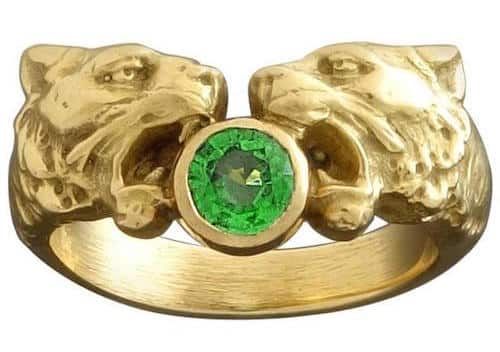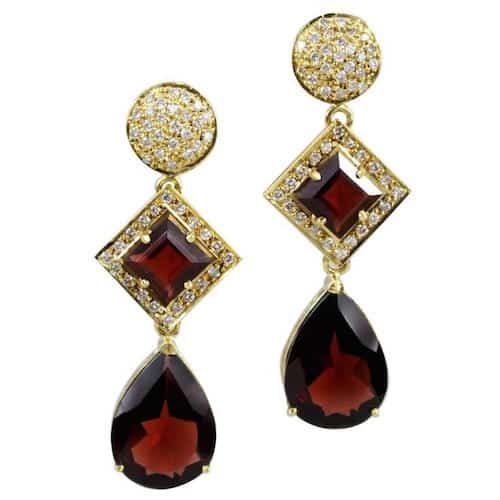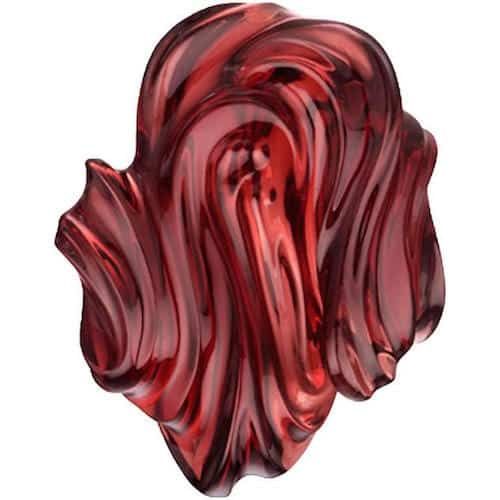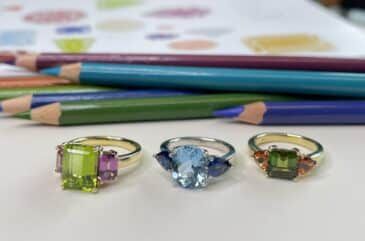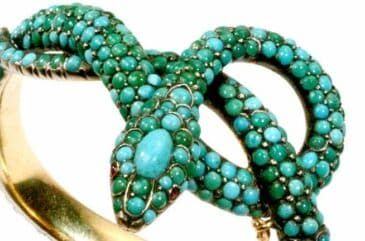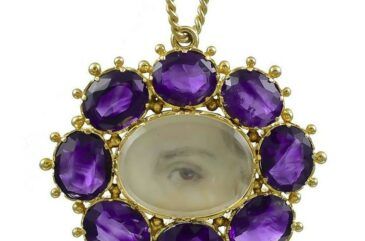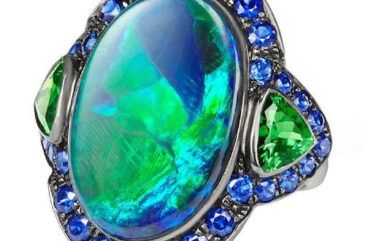The word garnet has roots both in Latin and English. In Latin, granatus means “seed,” and the old English word gernet, which means “dark red,” dates back to the 14th century. Regardless of the dictionary you are using, either term paints a picture in our heads of this beautiful stone, whose deep pomegranate hue is beloved by gem connoisseurs around the globe. While red garnets are the most popular, garnets actually come in a medley of colors. This gives January babies an opportunity to show off their individuality with a birthstone that offers plenty of variety.
Chemical Composition
All garnets have the same physical properties and crystal forms but have different chemical compositions, which result in garnets of many different colors, with blue being the rarest. Some examples of common gems that fall under the garnet category include tsavorite (a green garnet), demantoid (a variety of a green garnet but very rare), spessartine, or spessarite (an orange garnet), and rhodolite (purple-red garnet). According to the Gemologist Institute of America, there are more than 20 garnet categories, called species, but only five are commercially important as gems. These five are pyrope, almandine (also called almandite), spessartine, grossular (grossularite), and andradite. A sixth, uvarovite, is a green garnet that usually occurs as crystals too small to cut. It’s sometimes set as clusters in jewelry. Most garnets are chemical mixtures of two or more garnet species.
Historical Origins
Garnets have been used for adornment going all the way back to the Bronze Age. While we will never know if garnets can be used to prevent plagues or heal warriors, as has been suggested, we do know that both the Egyptians and the Romans felt that it was a worthy stone to set in gold for their nobility. In more “recent” times, garnets were ubiquitous in Victorian jewelry. The “G” in REGARD rings, the equivalent of the modern-day engagement ring, implied garnet.
Garnets were also highly valued in the region of Bohemia. The Smithsonian Museum of Natural History has in its collection an antique hairpin with Bohemian pyrope garnets from the Czech Republic. Bohemian pyrope got its name from Bohuslav Balbín, sometimes referred to as the “Czech Pliny,” in 1679. Abundant in the region, it was used often in jewelry during this time. In fact, it became so popular that in 1762, Empress Marie Terezie forbid its export. Stonecutting workshops opened in several regions across Bohemia, and pyrope became the country’s mineralogical symbol. While there was never a decline in its popularity, it was only in the mid-20th century that garnets enjoyed a revival.
As we have already learned, garnets can come in many of shapes and sizes, one of the largest ever discovered is a 68.82-carat Tsavorite garnet. This stone is also in the collection of the Smithsonian Museum of Natural History.
An abrasive stone, garnets can also be used for industrial purposes. Ground up into powder and mixed with water, it can be strong enough to cut steel. Another utilitarian tool is garnet paper, which is popular among carpenters for sanding natural wood.
Geographic Locations
Garnets can be found in locations around the world, depending on the type of garnet. According to the GIA, Brazil’s mines are rich in garnets, including spessartine, which can also be found in the Myanmar area, recognized for a specific shade of reddish-orange. India is known for red garnets while neighboring Sri Lanka is rich in rhodolite garnet. And Russian grounds hold demantoid garnet. Tsavorite is said to have been first discovered in Tanzania, but Kenya is also a major resource for this stone.

